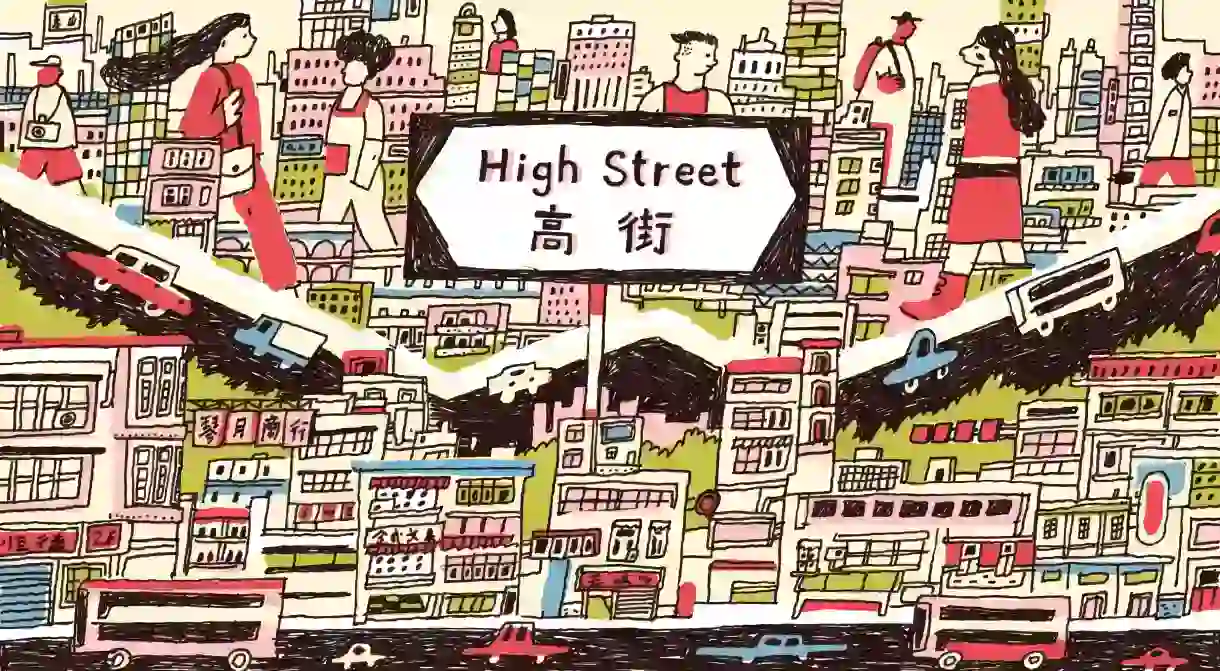The Secret Stories Behind Hong Kong's Street Names

Every city has street names that reveal a thing or two about the place’s history, and Hong Kong is no exception. Here are 10 city street names with interesting stories behind them.
As is often the case with former British colonies, many Hong Kong streets are named after former governors or English dignitaries. Des Voeux and Arbuthnot Roads were named after the tenth governor of Hong Kong and a British civil servant respectively. Others, like Flower Market Road, are simply named after the shops that are found there. But there are some streets in Hong Kong with backstories you’d never have guessed.

Rednaxela Terrace
Located in the Mid-Levels residential area, this street was originally supposed to be named ‘Alexander Terrace’, but accidentally ended up being called ‘Rednaxela Terrace’. While English speakers read words from left to right, the Chinese language was originally read from top to bottom and right to left. The Chinese clerk, not knowing the difference, mistakenly spelt Alexander backwards.
High Street
High Street is one of four streets that run horizontally along a steep hill in the Sai Ying Pun neighbourhood. But this street did not earn the title of ‘high’ because of its elevated position. The three streets below it are named First, Second and Third Street, and High Street was originally named Fourth Street. However, the number four, or sei in Cantonese, sounds like the word for ‘death’, and people successfully petitioned the government to change the street’s unlucky name.
Lan Kwai Fong
Lan Kwai Fong literally means ‘orchid cinnamon square’ in Cantonese, but in a broader sense, the term means ‘streets filled with orchids and fragrances’. Legend has it that before World War II, the area was home to street hawkers and flower shops, hence the reference to fragrances. However, another story suggests that the flowers and fragrant smells actually referred to the prostitutes who used to pick up clients here; the area was formerly a red-light district used by British soldiers.

Jubilee Street
Running between Des Voeux Road and Queen’s Road Central, this street was named Jubilee in 1887 to commemorate the 50th anniversary of Queen Victoria’s accession, also known as her Golden Jubilee.
Sai Yeung Choi Street South and North
Sai yeung choi is the Cantonese term for watercress, the leafy green vegetable often used in Cantonese dishes and soups. Back in 1924, these two streets were actually part of a small village that was surrounded by watercress fields. So it came to pass that the two busiest arteries in Mong Kok were named after a type of vegetable.
Beacon Hill Road
In the 17th century, a pirate named Koxinga led a rebellion against the Qing emperor Kangxi, which spread through the villages down the South China coast. To quell the rebellion, the Qing emperor ordered all the villages in this area to be evacuated and burned. The garrison that was ordered to enforce the emperor’s decree was called Beacon, and the site where they were stationed – now a residential road in Kowloon Tong – became known as Beacon Hill Road.
Tsat Tsz Mui Road
Tsat Tsz Mui, which means ‘seven sisters’ in Cantonese, is associated with a legend about seven girls who drowned themselves in a bay. As the story goes, the girls had made a pact never to get married. But their lives took a tragic turn when, one day, one of the girls was forced to marry. In the bay near Tsat Tsz Mui Road in the North Point neighbourhood, the girls took their own lives in an act of defiance.

Tong Chong Street
Meaning ‘sugar factory street’ in Cantonese, Tong Chong Street in Quarry Bay in the Eastern District was so named because the area was home to the local company Taikoo Sugar Refinery Company Limited, one of the world’s largest single-unit sugar refineries. Now part of the Taikoo Place commercial building complex, this street sees local food vendors and farmers gather to sell their produce on certain Sundays.
Stone Nullah Lane
Nullah is an Anglo-Indian word that refers to a ravine or narrow channel where water flows. This street in Wan Chai was named after a stream that once ran down from the hill above it, where a hospital now stands.
Yacht Street
Before the land was reclaimed, the neighbourhood of Tin Hau was once closer to the waterfront, and Yacht Street in the neighbourhood of Tin Hau was so named because it was the original site of the first Royal Hong Kong Yacht Club.
This is an updated version of a story originally created by Sally Gao.













